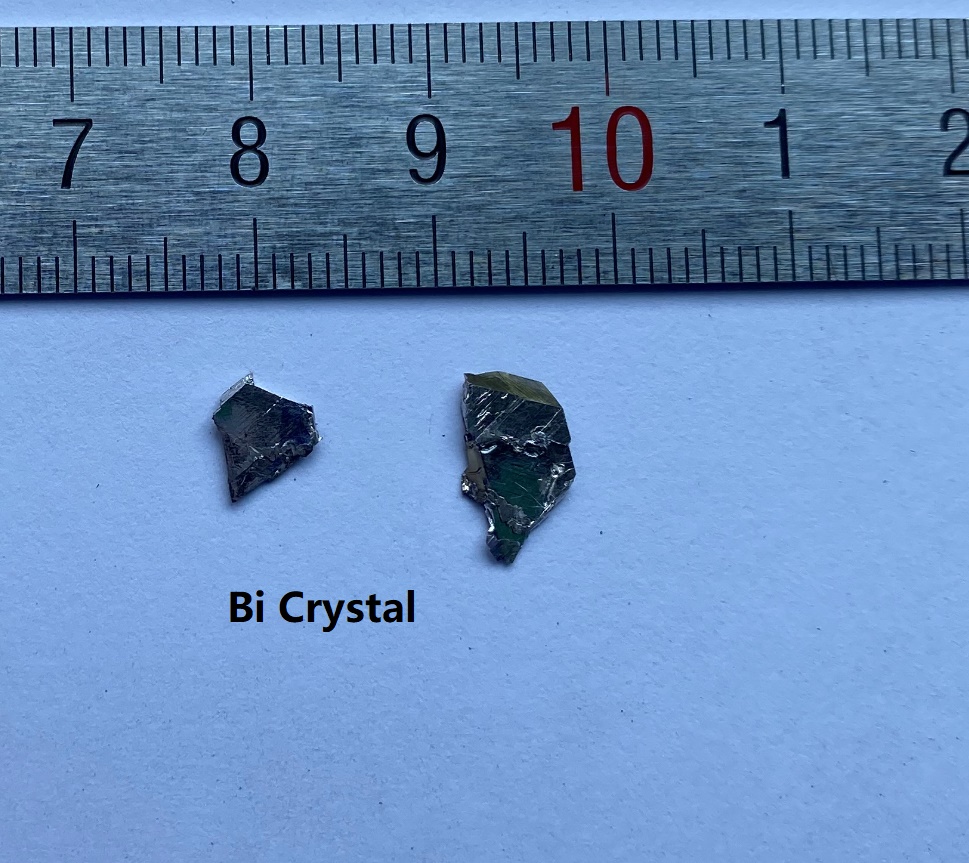Description
Bi Crystals (Bismuth)
Bismuth (Bi) is a semimetal with a rhombohedral crystal structure, renowned for its unique electronic, optical, and thermal properties. It exhibits high anisotropy, low thermal conductivity, and exceptional magnetoresistance, making it a valuable material for quantum materials research, thermoelectric applications, and 2D material studies.
Sample Size Options:
Crystals larger than 10 mm²
Material Properties:
Crystal Structure: Rhombohedral layered structure with strong anisotropy.
High Magnetoresistance: Significant changes in electrical resistance under applied magnetic fields.
Low Thermal Conductivity: Ideal for thermoelectric applications.
Semimetallic Behavior: Features small electron and hole pockets, making it suitable for quantum studies.
Crystal Structure:
Type: Rhombohedral (A₇ structure, R3̅m space group).
Features: Easily cleavable along specific planes, suitable for nanoscale research and exfoliation.
Degree of Exfoliation:
Ease of Use: Can be exfoliated into thin layers for advanced 2D material studies.
Other Characteristics:
Quantum Properties: Exhibits quantum oscillations and potential for topological phenomena.
Thermoelectric Performance: High Seebeck coefficient for energy conversion applications.
Environmental Stability: Stable under ambient conditions but benefits from controlled storage.
Applications:
Quantum Materials Research:
Ideal for studying topological insulators, quantum oscillations, and magnetoresistance.
Thermoelectric Devices:
Suitable for waste heat recovery and energy harvesting.
2D Material Studies:
Perfect for exfoliation into thin layers and creating heterostructures with other materials.
Sensors:
High sensitivity to magnetic fields and environmental changes, ideal for advanced sensing applications.
Electronic Devices:
Promising for nanoscale electronics and optoelectronic devices.
Additional information
| CAS Number | ₇440-₆9-9 |
|---|

